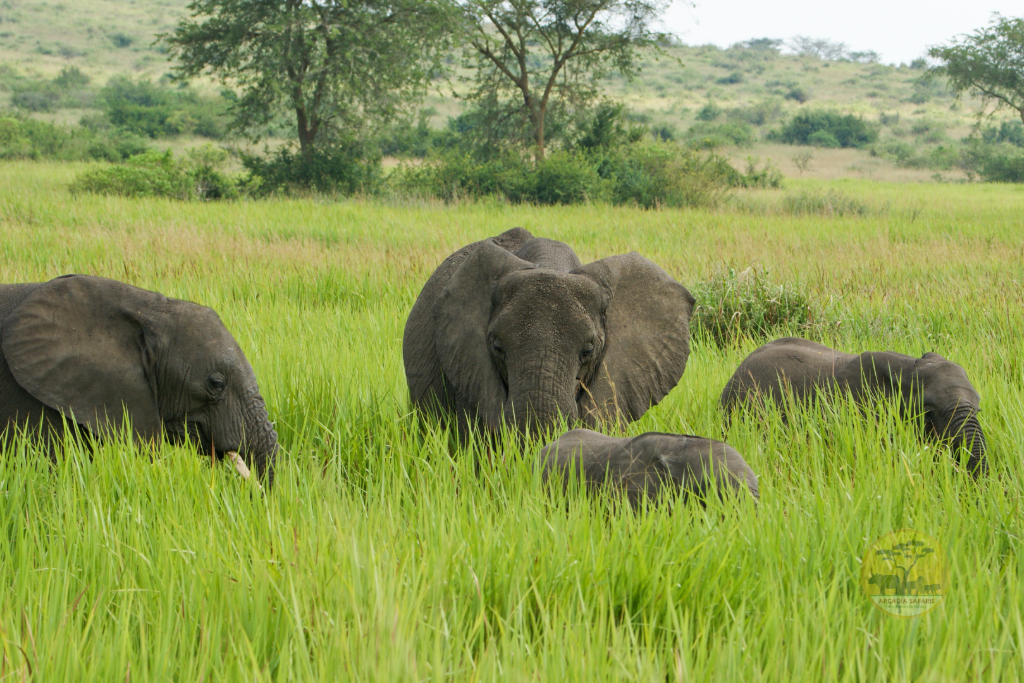African Bush Elephant versus the African Forest Elephant: Interesting Differences.
Difference Between African Bush and Forest Elephant; Africa boasts two species of Elephants: the so-called African bush elephant, also commonly referred to as Loxodonta africana, and the African forest elephant, popularly known as Loxodonta cyclotis. Although they are close relatives and similar in most ways, these two species of Elephants differ in such significant ways in appearance, habitat, behavior, and even in their conservation status. The objective of this article, therefore, goes into these differences, hence helping you appreciate each of those unique qualities that each of the elephant species possesses.
1. Body Building
One of the most striking differences between the African bush elephant and the African forest elephant is related to their size and physical appearance.
Size: The African bush elephant is the largest terrestrial animal on Earth, reaching approximately 3 to 4 meters high at the shoulder, weighing from 4,500 to 6,800 kg. In comparison, the African forest elephant is much smaller; these animals reach 2 to 2.5 meters at the shoulder, and their weight ranges from 2,000 to 4,000 kg.
Tusks: The tusks of the African bush elephant are long, thick, and curved outward. As such, it is easily distinguishable. These ivory tusks may reach a length of 2.5 meters or so. African forest elephants have tusks that are more straight with a thinner form, pointing towards the ground. Their tusks were adapted for the thick undergrowth in the forest.
Ears: In the case of the African bush elephant, the ears are big, fan-shaped, help by dissipating heat, and are rounder. The ears of the African forest elephant are smaller and more oval in shape with a compact form, reflecting their adaptation to life in the cooler and shaded environment of the forest.
Feet: Other subtle differences are seen in the feet. African forest elephants have rounder feet, with fewer toe nails-five in the front feet and four at the back-compared to four in the front and three on the back for the bush elephant.
2. Habitat and Distribution
As their names denote, African bush elephants and African forest elephants belong to different habitats, shaping their physical and behavioral traits.
African Bush Elephant: This elephant inhabits savannahs, grasslands, deserts, and woodlands across sub-Saharan Africa. As such, it is a commendable sight in huge, open areas like those in Uganda, Botswana, Tanzania, Kenya, Rwanda and South Africa. It prefers areas with plenty of water and grass. Because of its big body size, it travels long distances, making it suit the open expansive landscapes of the bush.
African Forest Elephant: This species has been recorded in the vast rainforests of Central and West Africa, with important populations in Gabon, Congo, Cameroon, and even parts of the Democratic Republic of Congo. Their more compact body and agility enable them to move with ease through dense vegetation, rarely found outside forested areas.
3. Behaviour and Social Structure
While social behaviors are similar between both elephant species, the essence of the difference in group dynamics and interactions is strikingly different.
Social Structure: The social structure of the African bush elephant is in large, matriarchal family units, usually led by an older female; such groups may number into the dozens. These family units commonly break up and regroup, often forming large herds around most water sources. By contrast, forest elephants have smaller, more tight-knit family units, usually involving fewer people. Their social groupings are less fluid and more enduring since their forest habitat is more enclosed.
Communication: Infrasonic communication, or low-frequency sounds, is employed by both species to maintain contact over long distances. This is, nonetheless, a special diandra of forest elephants, because in the dense forests where visibility is minimal, sound travels far more effectively. They also use these sounds to ward off predators and track each other within their thick environs.
4. Diet and Foraging Behavior
The African Bush Elephant: This is a primarily browsing animal. They feed on grasses, herbs, shrubs, and leaves. When the grasses are dried up, they strip the bark of trees and afterwards eat fruits, roots, and tubers. They have an enormous intake, up to 300 pounds a day, due to their huge size, and they can sweep over huge distances when searching for food.
The African Forest Elephant: Forest elephants are primarily browsers, consuming a variety of leaves, fruits, and tree barks. They contribute greatly to the ecological process of seed dispersal, especially in their home of forests, where the seeds of most tree species are dispersed while they forage for food. Their small size and habitat reduce their feeding compared to their bush brethren, but they are indeed vital for the biodiversity of the forest ecosystem.

5. Reproductive Differences
The reproductive cycles for both the African bush and forest elephants are similar; however, the latter usually attain sexual maturity earlier.
African Bush Elephant: Their females reach their sexual maturity at around 10 to 12 years of age. Their period of gestation lasts approximately 22 months. One calf is born every four to six years.
African Forest Elephant: Female forest elephants would reach their sexual maturity and start breeding a bit earlier, at around 8-10 years of age. Their gestation period, too, is long, at about two years; research does show, however, that interbirth intervals are shorter because of the differences in stresses associated with forest life.
6. Status Regarding Conservation
Though seriously threatened by human enterprise in their environments, both species have a slightly different conservation status.
African Bush Elephant: Bush elephants are listed as “Endangered” by IUCN because of severe threats caused by habitat loss, human-wildlife conflict, and poaching for ivory. However, conservations within countries like Botswana, Tanzania, and Kenya have created some successful results in the protection for these populations within the confines of protected areas.
African Forest Elephant: This species is even more critically endangered, classified as “Critically Endangered” by the IUCN. Forest elephants are especially open to poaching because of the high value of their denser ivory and due to the challenge in policing vast, dense forest habitats. They suffer greatly from additional deforestation and habitat fragmentation, which continues to take place with populations under severe pressure in countries such as Gabon and Congo.
7. Ecological Roles
African Bush Elephant: As “ecosystem engineers,” bush elephants mould their environment by knocking down trees, digging for water, and creating pathways for other animals. This would essentially be vital in helping keep balances within the savannah ecosystems to the advantage of smaller species thriving in those environments they modify.
The African Forest Elephant: This plays a very important role in the aspect of seed dispersal, thereby helping in the regeneration of tropical rainforests. Most tree species depend on these elephants for their seeds to be dispersed over long distances. The forest elephant has been termed a keystone species owing to their influence on forest biodiversity.
Remarks on the Difference Between African Bush and Forest Elephant.
Even though the African bush elephant and the African forest elephant both emanate from a common ancestor and share many similarities, they are very different in size, habitat, behavior, and their roles in the ecosystem. While the African bush elephant dominates the savannas and grasslands, the African forest elephant finds its home in the thick rainforests. Both of them are facing unparalleled threats from human activities, making their conservation a crucial point in terms of sustaining the uniqueness of ecosystems in Africa.











